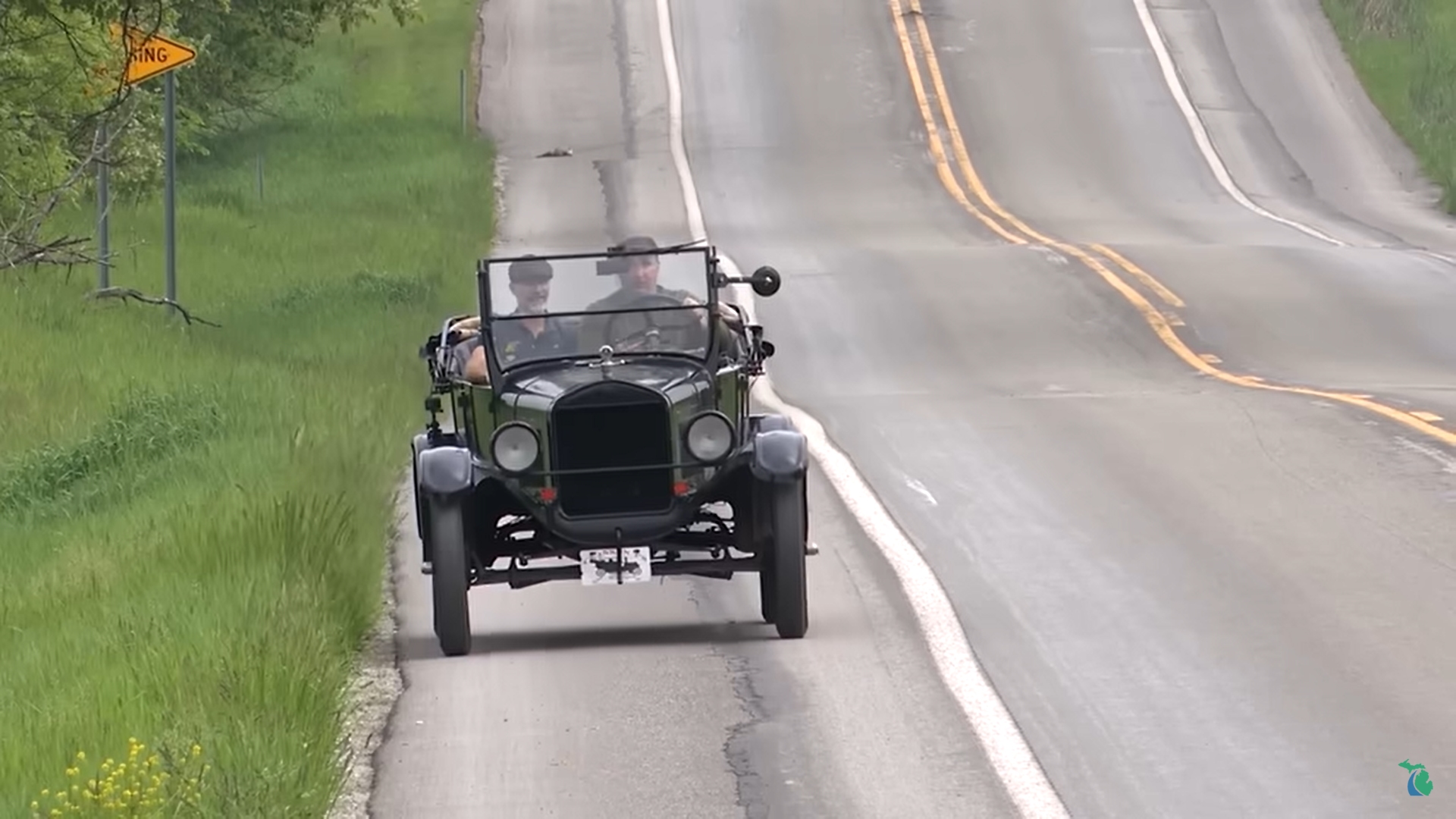

Michigan’s car culture is a vibe, and it all started with the Model T. Once that assembly line got going, more people could opt-in. Although production ended in 1927, the Model T continues to make an impact today just as it did more than a hundred years ago—especially if you’re Amish.
“Wait a minute,” you ponder. “The Amish forbid the use of motor vehicles.” You contemplate correctly. That hasn’t changed. But they do use roads, the same ones cars do. Of course, no horse and buggy can ever match the speed limit, so Amish commuters travel on the shoulder. To ensure these lanes provide enough leeway, the Michigan Department of Transportation (MDOT) utilizes an OG Model T as its standard of measurement.

Del Kirby, MDOT manager for the Cadillac (Mich.) Transportation Service Center, explains that buggies have different configurations, sometimes specific to a region. “What was called the ‘narrow track’ was used more in the northern states, and it had an axle width of about 64 inches,” he said. According to Kirby, when Ford developed the Model T, the vehicle was built to the specs of the time’s top transporter: a horse-drawn carriage.
“[Henry Ford] built them to embrace those tracks of the wagon,” said Kirby. “So instead of trying to straddle the ruts, the Model T drops right in. The narrow track on the buggy appears to pretty much match the width on the Model T.”
MDOT uses the Model T to conduct road audits in areas with Amish and Mennonite populations. “For the most part, if you’re riding in a Model T, you’re going to have about the same experience on the shoulder of a road that you would if you’re riding in an Amish buggy,” said Kirby. The vehicle allows the transportation authority to safely do these road assessments while, at the same time, not imposing on the communities. Such road audits are critical in improving road safety and minimizing crashes.

Amish America, a fansite for all things Amish, says Michigan has the sixth-largest Amish population in the U.S., totaling about 18,000 people. MDOT is currently working on the M-91 project, a $6-million investment to rebuild 4.5 miles of roadway in Montcalm County. Construction will require a complete closure of a section of Highway M-91 from May to September of this year.
Narrow shoulders pose the greatest risk because buggies are forced into the traffic lane, where they impede faster-moving vehicles. Kirby said that even wide shoulder lanes or fully paved ones aren’t without issue because buggies are not inherently heavy and tend to sway when traveling. When the road is uneven or a tire shifts out of its lane, not only will the ride be uncomfortable, but it can also be unsafe due to the imbalance and possibility of putting the horse in a panic. Being so close to cars and trucks can also spook a horse.
“We’ve had a number of terrible crashes with both the Amish and Old Order Mennonites in Montcalm County,” said Kirby. “On the M-91 project, we’re adding an additional couple feet of pavement width on either side [of the shoulder], and we’re going to put rumble strips.” When construction is complete, Kirby says there will be an 8-foot-wide shoulder that should safely accommodate buggy travel alongside the highway.